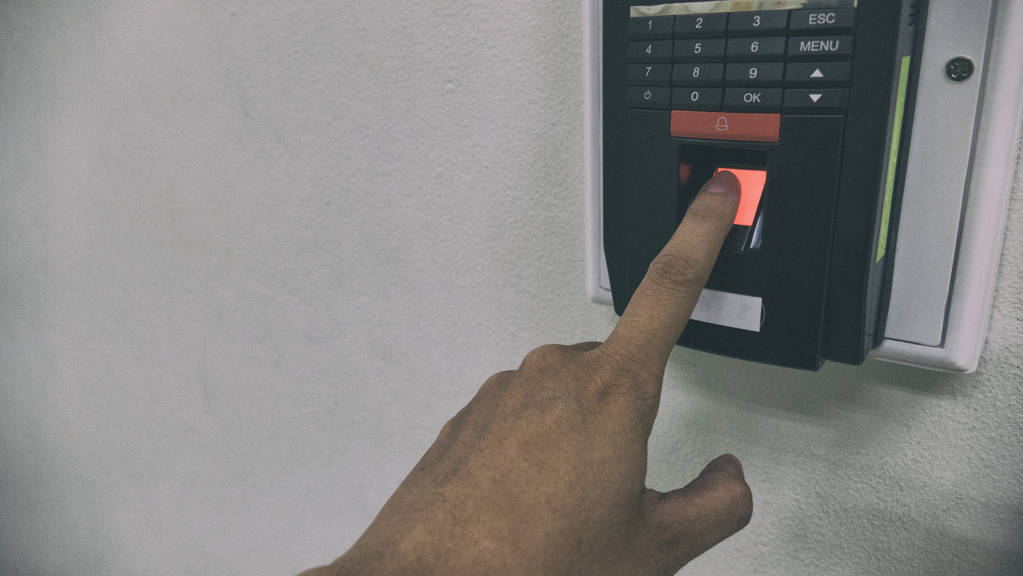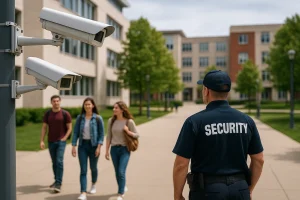Optimizing Building Security: The Role Of Electronic Access Control Systems
The management and personnel of a security guard company face unique challenges when dealing with building access control. When managing entry points, businesses and buildings must be accessible and inviting to tenants, visitors, or customers. Yet these same spaces must be made safe from undesired unauthorized individuals or situations. Today’s electronic access control systems, when […]
By David Kerolles
April 30, 2024

The management and personnel of a security guard company face unique challenges when dealing with building access control. When managing entry points, businesses and buildings must be accessible and inviting to tenants, visitors, or customers. Yet these same spaces must be made safe from undesired unauthorized individuals or situations. Today’s electronic access control systems, when well implemented, can provide that optimal security balance.
Access systems for the security of buildings have been in use throughout history. Every safe medieval castle had its heavy drawbridge doors and deep moats to secure it. But today’s building security is no longer based on moats or drawbridges anymore. Security technology has moved far beyond the simple mechanical access control provided by basic keys and locks, or physical access control systems like fences or barriers. Now a variety of electronic access control systems are available. Electronic access control electronically blocks access to a building by utilizing electronics systems. Entry and exit is monitored by methods like key cards or fobs, PIN codes, biometric verification or smartphone-based systems. Digital access control can be further enhanced in conjunction with the traditional manual access control personnel, physical barriers like gates, monitoring with security cameras, etc.
What Is A Building Access Control System?
Simply put, a building access control system is a way to control who comes into any building or property– whether it’s a school, gated community, office building, manufacturing plant, self-storage facility, or bank. Each of these locations have specific security goals and needs- who is authorized to enter each establishment is of primary security importance.
Building access control has traditionally depended on the role of the security guard. Guards were given a thorough security guard background check and trained to respond immediately to threats, to communicate security problems or emergencies, and protect access to the building, its inhabitants, and its resources.
However now security guards are complimented by a stunning array of electronic access control systems to improve access security. Electronic access control systems can work in conjunction with the use of surveillance cameras. Surveillance cameras monitor and record activities in and around a specific location- to observe, record and alert in cases of breach, theft or vandalism. (For instance, these surveillance camera uses are detailed in California surveillance security camera laws). But electronic access control systems can actually regulate who can physically enter a building or area, and therefore can prevent crimes altogether.
What Are The Standard Categories Of Building Access Control?
Standard categories of building access control are:
- Manual Access Control Systems-These are traditionally done by human monitors at a building entry (e.g. a doorman at an apartment complex, security guards checking ID’s at a nuclear facility, a guard at a bank vault).
- Physical Access Control Systems– Such physical systems consist of physical elements like gates, turnstiles, fences and barriers.
- Mechanical Access Control– Mechanical access control systems are traditional basic low tech controls such as keys and locks, padlocks, deadbolts, or chained gates.
- Electronic Access Control Systems– Today’s high-tech electronic building access system manages entry and exit using electronics. Examples of these entry-regulating methods are key cards, PIN codes, biometric (fingerprint or retina) scanners, or smartphone technologies. Systems can be used offline as a standalone access point, or online as cloud-based technology so as to manage entry permissions from anywhere.
Components Of Electronic Access Control Systems
Anyone choosing an access control system must modify the systems to their specific needs. A company that stores confidential information or owns very valuable equipment will have different access system needs than an apartment complex who wants to deter unauthorized visitors but also give entry to deliveries, personal visits, or real estate tours. So before addressing the actual types of access control systems, it is good to understand the main components of these control systems.
All electronic control systems have:
- Electric locks
- There are 2 types of electric locks: fail-safe locks that unlock when power is lost, prioritizing safety and emergency exit/access (e.g. in case of a fire)
- AND fail-secure locks that remain locked when power is lost, maintaining security, protecting data or goods.
- Access control panels installed in a secure location. Messages are sent to the control panel when someone is using credentials to access a controlled area. Messages return from the panel to unlock and allow access.
- Access control servers that store and secure data. They can keep track of who enters controlled areas and when. Servers can be cloud-based, computer-based, or even be on a key card.
4 Types Of Electronic Access Control Systems
- KEY CARD READERS Key card technology is similar to credit card technology (swiping a card’s magnetic stripe or reading a chip). Key card readers are either a magnetic stripe card reader that reads the inserted card, or a proximity reader that reads a chip from the card at a certain distance. These cards have the advantage of being easy to carry for the user, they can be replaced, and are fast and convenient. The downside is the use of eco-“unfriendly” plastic material for the cards, they are fragile and have to be replaced if broken, and they can be copied or stolen easily.
- KEYPAD READERS This type of access control is based on entering a passcode on the unit installed at an entrance. The correct passcode grants access to the person. No cards or keys are needed, it reduces plastic usage, and passcodes can be easily distributed to the correct entrants. The downside of keypad readers is that people forget passcodes, the passcode can be shared with unauthorized users, plus the code needs to be changed frequently (e.g. when personnel leave the company). Keypad reader access control systems do not distinguish between individuals, so there is no record of who exactly is accessing the door.
- TWO-FACTOR AUTHENTICATION This type of electronic access control system combines two systems to enhance access, especially useful where high levels of security are necessary. Usually a key/card reader is combined with a keypad reader. Two-factor identifications can be very useful in some situations (e.g. often used by companies to protect data on office computers especially when they have remote workers). However it is more time-consuming for personnel to use, they have to carry a key or card, AND remember a passcode. Denied access situations can slow down work and productivity as well.
- BIOMETRIC FINGERPRINT READERS These access systems offer high security since they are based on unique fingerprint patterns of only authorized individuals. Biometric fingerprint readers allow tracking of those who access their area, and there are no worries about lost access cards or continual password updates. But fingerprint readers are costly (cost for hardware, software, installation, maintenance). There are false acceptance/rejection rates as well. Some also feel biometric data is highly personal. They raise concerns about privacy or misuse/identity theft if data falls into the wrong hands.
In conclusion, these are highlights of the most relevant insights into the use of electronic access control systems. These electronic systems enhance building security, and correctly manage entry points and authorized access. Security guard company management and personnel need to thoroughly understand all available electronic access control technologies. Comprehensively understanding their advantages and disadvantages, and effectively utilizing electronic access control systems will provide the best building security solutions for their clients’ needs.
Related Posts
Business Growth
As a security company owner, you are encouraged by the growing demand for security services. Security concerns are on the rise, and all types of security are in high demand everywhere. You are proud of the company product you offer. You have assembled and trained great security personnel for your clients. Your company could be […]
By David Kerolles
August 16, 2023
Business Growth
Technological progress has profoundly transformed the realm of surveillance equipment, delivering unparalleled functionalities for safety and supervision in this digital era. Integrating artificial intelligence (AI) and improving image recognition has not only boosted surveillance efficiency but also sparked crucial debates concerning privacy and ethical implications.
By Richelle Mayor
November 29, 2023
Business Growth
Imagine a future where security guards are no longer limited to their physical presence, where their abilities are enhanced by cutting-edge technology. As the security landscape evolves, so do the roles of security personnel. The rise of augmented guards is transforming the way we think about security, revolutionizing the industry with their unique capabilities. Join […]
By Michael Y. Daniels
July 26, 2023





